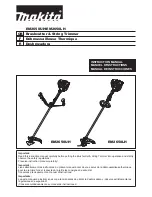
18 | AXYGEN AXYPET PIPETTORS
10. Cleaning and Sterilization
Cleaning
External surfaces of the pipetting pushbutton, the
ejector pushbutton, the handgrip, the shaft nut, and the
adjustment knob may be cleaned using a cloth dampened
in isopropyl alcohol. The remaining parts removed from
the pipettor during pipettor disassembly may be washed
with distilled water or isopropyl alcohol.
WARNING:
Before using cleaning agents other than
those recommended by the manufacturer, check the
compatibility charts and consider chemical resistance of
the following plastics: PEI, PP, PC, POM, PA, PPS, PVDF used
to produce the pipettor parts.
Sterilization
The pipettor can be sterilized in an autoclave at 121°C
for 20 minutes. After sterilization, the pipettor should be
dried and cooled to room temperature. It is recommended
to:
• Unscrew the shaft nut slightly prior to sterilization and
re-tighten after autoclaving.
• Set the locking ring in lower (unlocked) position prior to
sterilization.
• Sterilize the pipettors in autoclave with an initial
vacuum and drying cycle.
• Prior to sterilization, unscrew the shaft nut slightly in
the AP-2 to AP-1000 pipettors, and unscrew the shaft
slightly in the AP-5000 and AP-10ML. After autoclaving,
these parts should be screwed tight again.
The precision of the results should not alter if the
pipetting process and autoclaving are carried out as
described in this manual. Because a slight change in the
accuracy of the dosage may occur, it is recommended to:
• Check the calibration of the pipettor after the initial
first, third, and fifth autoclaving cycles and then after
every 10 autoclaving cycles.
Ultra Violet (UV) Sterilization
The pipettors are UV-resistant. However, the
recommended distance from the radiation source to the
exposed element should be not less than 50 cm. Prolonged
and very intense UV exposure can cause decoloration of
pipettor parts without effecting their performance.





































